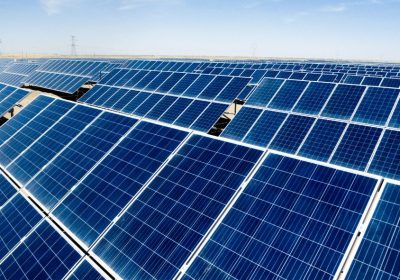
Relationship Between Polymer Prices and Crude Oil
While crude oil does serve as a raw material for producing plastics, it is not the primary source of feedstock for plastic production. Confused? Let’s understand the relationship between polymer and crude oil.
Plastic Production
Plastics are produced with the help of natural gas, feedstocks from natural gas processing, and feedstocks from crude oil refining. For example, polyethylene (PE) is obtained from crude oil. This crucial polymer can also be derived from natural gas and coal. However, a strong association exists between crude and polyethylene in popular perception.
There is a clear correlation between the prices of crude oil, polyethylene, and ethylene. But what kind of relationship do they adhere to? Does it follow a linear pattern? Is there a strong or weak correlation between them?
Knowledge about the correlation between crude prices and purchase contracts is crucial for sourcing managers at different levels of the value chain. It will help them ensure that polymer prices in various end-use products are accurately reflected in the contracts.
The correlations between ethylene, PE, and oil are remarkably strong when mapped. Thus, changes in oil prices can result in notable fluctuations across the prices of ethylene and PE. Let’s start by exploring the factors that influence the production process of polymers with petrochemicals.
Before that, It’s important to grasp the role of crude oil as a primary feedstock for producing petrochemicals like ethylene and propylene. Additionally, petrochemicals play a crucial role in the creation of different types of polymers, including polyethylene, polypropylene, and PVC.
Two main types of feedstocks are used as the primary building blocks for the production of polymers:
1. Olefins
2. Aromatics

The feedstocks or building blocks are derived from either naphtha or propylene, which are refined crude oil products, or from ethane, which is sourced from natural gas.
Let’s take a closer look at the most widely used technique for manufacturing PVC, which is also a commonly used polymer.
Crude Oil Making Process
- Initially, crude oil undergoes the refining process in an oil refinery, which leads to various substances such as liquefied petroleum gas (LPG) and naphtha.
- Next, naphtha or LPG is used as a feedstock for a steam cracker, which can produce ethylene.
- Later, ethylene is combined with chlorine to produce a vinyl chloride monomer.
- Finally, vinyl chloride monomer is polymerized to obtain polyvinyl chloride, also known as PVC.
Polyethylene is another type of polymer derived from coal, crude oil, and natural gas.
The Relationship Between Crude Oil and Polymer
Refineries transform fossil fuels into petrochemicals, which then go on to become the plastics that are a part of your daily life. A tight oil market can result in higher polymer prices.
According to the International Energy Agency, there is a projected increase in global oil demand until 2050, driven by the demand for plastics and other petrochemical products. Major oil companies are prepared to address the growing demand domestically and internationally.
According to Rachel Meidl, an energy and environment fellow at Rice University, the oil industry is increasingly exploring opportunities in the chemicals sector for diversification.
As a result, when the cost of oil and natural gas increases, the price of plastic also rises.
However, with the prolonged duration of elevated costs, the only option left is to transfer the burden to the consumers, potentially leading to demand destruction, where people become unwilling to pay the price and start searching for alternative options.
However, there remains a limited number of alternatives available.
Unfortunately, the recycling rate for plastic is extremely low, with less than 10% of all plastic ever made being recycled. The majority of plastic ends up in landfills instead of being reused.
According to Rachel Meidl, the reason behind this is that even when the cost of oil and gas increases significantly, it remains more cost-effective to manufacture new plastic rather than recycle the existing plastic.
Crude Oil and Polymer Supply Chain
Let’s explore the transmission mechanism that discusses the impact of crude oil prices on polymer prices throughout the supply chain. We will also delve into how fluctuations in raw material costs can affect polymer manufacturers, distributors, and end-users.
This section will also discuss the impact of fluctuations in crude oil prices on polymer pricing strategies and market dynamics.
Scenario of PVC Resin Prices
The below graph presents the prices of polyvinyl chloride (PVC) resin in India from 2015 to 2022.

In 2022, the cost of polyvinyl chloride (PVC) resin in India rose to INR 111 per kilogram. In comparison to 2015, there was an almost twofold increase in the PVC price.
The surge in prices for crude oil, natural gas, and coal, coupled with a growing demand, led to the price hike of PVC.
Fluctuations in the crude oil market can have a substantial effect on the prices of polymers. As an example, the decrease in OPEC production by 2.5% in 1999 resulted in a rise in crude petroleum prices, subsequently impacting the prices of organic chemicals and plastic products.
In the same way, the decrease in OPEC production by around 8.3% between 2000 and 2002 had a direct impact on the prices of crude petroleum, which in turn affected the prices of organic chemicals and plastics products.
Market Dynamics
Various factors, including geopolitical events and currency changes, can amplify the influence of crude oil price fluctuations on polymer prices.
The correlation between crude oil prices and polymer prices is not always straightforward or predictable, as various external factors can exert an influence on this relationship.
As an example, the cost of natural gas, which is used as a feedstock for polymer production, can affect polymer prices, especially in areas where natural gas plays a major role.
In addition, the production of goods, fluctuations in the economy, and changes in the plastics market can all impact the prices of polymers, making the connection with crude oil prices more intricate.
Changes in OPEC production levels and other supply shocks continue to have a major impact on the pricing of crude oil and polymers.
Conclusion
Now that we know how polymer prices are affected by crude oil, it is understood that it is influenced by a range of factors. Some of the common factors are prevailing conditions in the market, disruptions in the supply chain, and significant global events.






